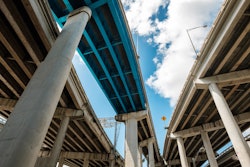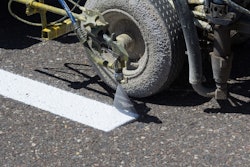
With governments across major world economies continuing their thrust on developing the infrastructure sector, the demand for construction equipment and associated spare parts is set to witness a noticeable uptick over the forthcoming years.
As per the Canadian Department of Finance, the Government of Canada has allocated an estimated $567 million in infrastructure in its 2022-23 budget. The budget committed approximately $169.5 million for the upgradation and maintenance of its transportation network, with nearly $151.4 million earmarked for bridges and culverts, and highway paving, reflecting about $10 million growth since the last budget.
With these optimistic scenarios, the global construction equipment aftermarket is expected to observe lucrative growth in the ensuing years.
Why is the demand for earthmoving and road-building aftermarket equipment gaining momentum?
With fast-paced urbanization, industrial growth, and the city skylines altering to accommodate vertical expansion, the need for earthmoving and road-building construction equipment stands critical for a variety of earthworks and heavy-duty applications owing to their numerous benefits over manual labor, traditional methods, and low-end technologies.
However, their skyrocketing demand can be attributed to various factors, some of which are mentioned below:
Increasing road development projects
The improving economic landscape and accelerating pace of urbanization across both developed and developing economies have led to a massive surge in on-road vehicles, resulting in increased traffic congestion and fatalities. For instance, traffic fatalities in the U.S. claimed over 20,000 lives during the first half of 2021.
A notable rise in the casualties caused due to road accidents and related injuries has prompted governments globally to undertake necessary initiatives that focus on ensuring passenger safety on roads. To that end, the U.S. government, under its Bipartisan Infrastructure Law, rolled out the first-ever Safe Streets and Roads for All program that supports projects that aim to reduce traffic fatalities.
The aging road infrastructure across high-income countries such as the U.S. is also one of the key reasons offering an anticipated boost to road development projects. As per estimates, 45,000 bridges and 1 in 5 miles of major roads and highways in the United States are in unsatisfactory condition.
To aid this issue, the regional government has announced an additional investment worth $110 billion over a period of five years to reauthorize surface transportation programs. The funding will be utilized to fuel several transformational projects in the country that will focus on repairing roads and thousands of economically significant as well as smaller bridges.
With an increased emphasis on developing a dense network of roads and bridges and extending policy support, the construction equipment aftermarket share will propel substantially through 2032.
Expanding energy infrastructure
Earthmoving aftermarket equipment has been becoming increasingly popular due to the ongoing expansion of the existing grid infrastructure, which, on the whole, will positively influence the construction equipment aftermarket dynamics in the foreseeable future.
Energy consumption across the globe has witnessed a multifold increase over the recent decades, given the rising income levels and commendable growth in commercial activities globally. However, the existing power insufficiency and lack of adequate grid infrastructure have been taking a huge toll on the economy. As proof, the Department of Energy U.S. estimates that power outages cost the country's economy about $70 billion every year.
To mitigate these losses, countries globally have been undertaking necessary initiatives to expand their existing power infrastructure and aid the burgeoning electricity demand. The EU Member States, for instance, in December 2022, accepted the Commission's proposal to invest €602 million (~USD 653 million) of EU funds in eight multilateral energy infrastructure projects. The fund allocation took place under the CEF (Connecting Europe Facility) for Trans-European Networks for Energy. The moves opened the way for monetary aid to execute the projects in electricity, including one for CO2 networks, smart electricity grids, an offshore LNG terminal, and underground gas storage.
Accelerating repair and maintenance activities
The upgradation and expansion of existing commercial and transportation infrastructure is another factor augmenting the construction equipment aftermarket outlook throughout the projection period. China, for example, is planning to expand its existing high-speed rail network of 22,000 miles to double-fold by 2035.
Similarly, the U.S., under its Infrastructure Investment and Jobs Act, has infused a sum of $17 billion in waterways and port infrastructure and $25 billion to address the repair and maintenance backlogs at airports and check the emission levels and congestion near these facilities. The investment will further be used to leverage low-carbon technologies and drive electrification, thus, propelling the demand for roadbuilding and earthmoving equipment.
Stringent emission norms to bolster the adoption of aftermarket solutions
According to the International Energy Agency-
- The built environment contributes to 40% of the total CO2 emissions annually.
- Building operations account for 27% of the annual global emissions.
- Building construction and other constructions are responsible for an additional 13% of emissions annually.
The increasing carbon impact of the construction sector is playing a crucial role in accelerating the transition from buying new equipment to aftermarket solutions. The adoption of these solutions significantly lowers the energy consumption and emission levels that take place during the manufacturing of new equipment. In addition, they also keep the total cost of ownership, transportation, operation, maintenance, and other capital costs in check while helping us as a society to achieve the internationally agreed-upon carbon neutrality goals.
Governments and several regional and international authorities have also been taking charge and implementing strict emission norms to aid the skyrocketing pollution levels, creating a favorable growth outlook for the construction equipment aftermarket. To illustrate, Stage IV CEV emissions standards that came into force on 1 April 2021 in India check the carbon emissions produced by construction equipment vehicles.
Asia Pacific to emerge as a lucrative revenue pocket
The construction equipment aftermarket industry in the Asia Pacific is primarily gaining momentum due to consistent population growth, rapid urbanization, and the subsequent rise in infrastructural investments in countries such as China and India. Based on the recent UN-Habitat report, as much as 54% of the global urban population, equivalent to more than 2.2 billion people, lives in Asia. The number is expected to rise by another 1.2 billion people by 2050, recording almost two-fold growth.
In the same context, the latest World Bank report assesses that over the coming 15 years, India will be required to invest $840 billion or an average of $55 billion annually into its urban infrastructure to satisfy the needs of its fast-growing urban populace. These investments, in consequence, will generate positive growth prospects for the APAC construction equipment aftermarket.
What the future holds for the construction equipment aftermarket?
While the aforementioned factors are poised to bring remarkable growth opportunities for the construction equipment aftermarket business, the implementation of several growth measures and expansion strategies will further bolster industry revenues over the estimated period.
For instance, according to the Q1 2022 sales report by Caterpillar Inc., the company recorded a 14% uptick in sales and reached US$13.6 billion from US$11.9 billion in Q1 2021. The growth was primarily attributed to higher sales volume, higher end-user demand for equipment and services, favorable price realization, and changes in dealer inventories.
That being said, the accelerated shift toward the use of renewable technologies and eco-friendly practices will set the stage for further growth opportunities.




















